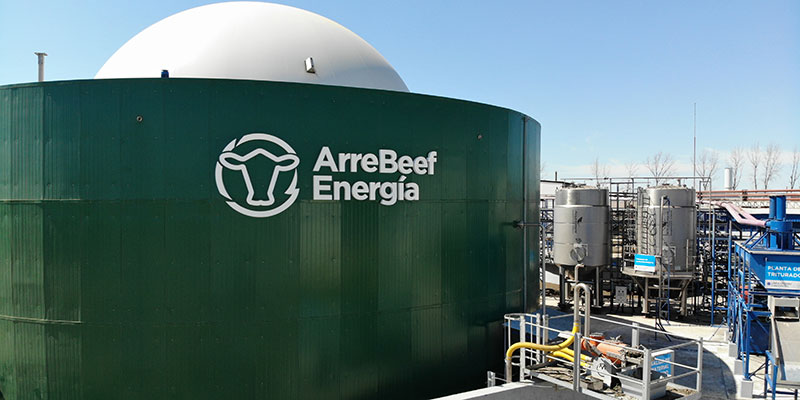
Waste streams with high organic content necessitate a digester designed to handle a larger organic loading rate.
Engineers consider a range of factors — including the waste to be treated and the desired outcome — when designing an AD system
Anaerobic digestion (AD) is a well-established technology for the treatment of organic waste streams. It harnesses the power of microorganisms in an oxygen-free environment to decompose organic matter, generating renewable biomethane as a byproduct and significantly reducing waste volumes. While the core principles remain constant, there is a remarkable degree of variation in the design and configuration of anaerobic digesters. What accounts for such a diversity of approaches?
The answer lies in the inherent heterogeneity of organic waste itself.
Waste Composition Dictates Digester Design
Organic waste streams originate from diverse sources, including agriculture, food processing, and municipal wastewater treatment. Each source yields waste with a unique composition, characterized by the molecular structure of its organic compounds. These structure variations significantly impact biodegradability, the ease with which microorganisms can break down the material. For example, simple sugars are readily degraded compared to the more complex carbohydrates found in woody materials.
The design of an anaerobic digester must accommodate these variations in biodegradability. Two key factors influencing digester selection are:
- Organic loading rate (OLR): This metric expresses the relative amount of organic material introduced into the digester compared to its total volume. Waste streams with high organic content necessitate a digester designed to handle a larger OLR.
- Solids profile: The amount and type of solids present in the waste stream (particulate versus soluble matter) significantly impact bacterial activity and the required digestion time.
Optimizing Performance Through Design
Based on the OLR and solids profile, engineers select a digester configuration that optimizes performance. Some common considerations include:
- Solids retention time (SRT): This parameter reflects the average time that solid material, including microorganisms, remains within the digester. High-solids waste streams often necessitate a longer SRT to allow for sufficient hydrolysis (breakdown) of complex organic compounds.
- Hydraulic retention time (HRT): This metric represents the average time the liquid portion of the waste remains in the digester.
Certain digester designs, like conventional plug-flow reactors, excel at handling waste with a high total solids content. They typically utilize longer HRT and SRT values, offering a simple operational approach but requiring a larger reactor footprint.
Performance Goals Shape Digester Choice
The intended outcome of the anaerobic digestion also influences digester selection. In some instances, AD serves as a tertiary treatment step within a larger wastewater treatment facility, with the primary aim of reducing sludge volume. On the other hand, other applications prioritize biomethane production, making the digester the primary waste treatment technology.
These contrasting goals are often driven by two factors:
- Caloric value of the waste: The energy content of the waste stream directly impacts its potential for biomethane generation.
- Digestate disposal: The final product of the AD process, digestate, requires proper management. Depending on its quality, digestate can be suitable as a soil amendment or may necessitate further treatment before disposal.
Matching the Digester to the Waste Stream
For waste streams with minimal solids but a high concentration of dissolved organics, there are distinct advantages offered by high-rate digester systems like those employing recuperative thickening or granular sludge. These systems maintain a high SRT by separating and recycling a portion of the bacterial population, enabling a smaller reactor volume compared to conventional designs. However, such systems require more intricate monitoring and control mechanisms.
The presence of specific contaminants within the waste stream can further influence digester selection. For instance, systems with high levels of calcium, grease, or suspended solids might not be suited for fluidized bed configurations, while other designs can effectively manage these challenges.
A Tailored Approach
The sheer diversity of organic waste streams necessitates a corresponding variety of digester designs. No single configuration is universally applicable. Factors like waste composition, desired performance outcomes, and specific contaminant considerations all play a crucial role in selecting the most effective and efficient digester technology for a particular application.
Our team brings years of experience optimizing solutions for a variety of industrial clients so they can gain benefits from their wastewater. Contact us today to get a solution that’s customized to your needs.
